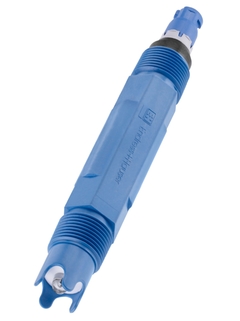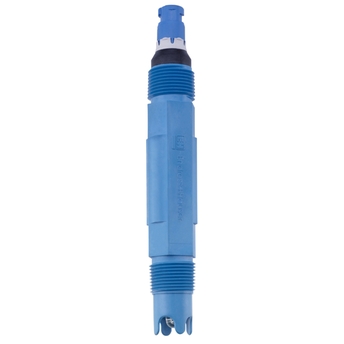-
Measuring principle
Potentiometric
-
Application
Flotation, leaching, neutralization, outlet monitoring
-
Characteristic
Resistent against electrolyte poisoning and dirt repellent gel-electrode including process connection NPT 3/4″
-
Measurement range
pH 0 to 14
-
Measuring principle
Gel-compact electrode with double chamber reference system, kalium nitrate bridge electrolyte and PTFE-diaphragm
-
Design
Compact electrode in PPS housing with NPT 3/4″ process connection
-
Material
Housing: PPS
pH electrode: lead-free membrane glass
Double chamber reference system: KNO3 and KCl/AgCl -
Dimension
Diameter: 22 mm (0.87 inch)
Length (protcetion guard, long shaft): 150 mm (5.91 inch)
Length (flat membrane): 140 mm (5.51 inch) -
Process temperature
Version LH: 0 to 110 °C (32 to 230 °F)
Version NN: 0 to 80 °C (32 to 170 °F) -
Process pressure
1 to 10 bar abs at 80 °C
(15 to 145 psi at 176 °F) -
Temperature sensor
NTC 30K
-
Ex certification
(optional) FM IS NI Cl. I Div.1&2, Groups A-D
-
Connection
Memosens plug
-
Ingress protection
IP68
Field of application
Orbipac CPF81D is the digital, simple solution for harsh environments. It measures reliably and accurately even in fibrous media and at high flow rates. With its integrated assembly, the electrode saves space and time during flow or immersion installation. Orbipac CPF81D is not the latest Memosens generation. To get information on the new Memosens CPF81E sensor with extended functionality, click here.
Orbipac CPF81D is the robust pH sensor for processes in mining industries and treatment of industrial water and wastewater. It monitors:FlotationLeachingNeutralizationInlet and outlet
Benefits
Suitable for flow and immersion installation Long time stable: Second electrolyte bridge for better protection against electrode poisoning ions such as S2- or CN-Robust polymer housing protects against mechanical damage Optional flat membrane suitable for high flow rates and fibrous media Maximum process safety through non-contact inductive signal transmissionEnables predictive maintenance due to storage of sensor and process-specific dataReduced operating costs due to minimized process downtime and extended sensor lifetime


